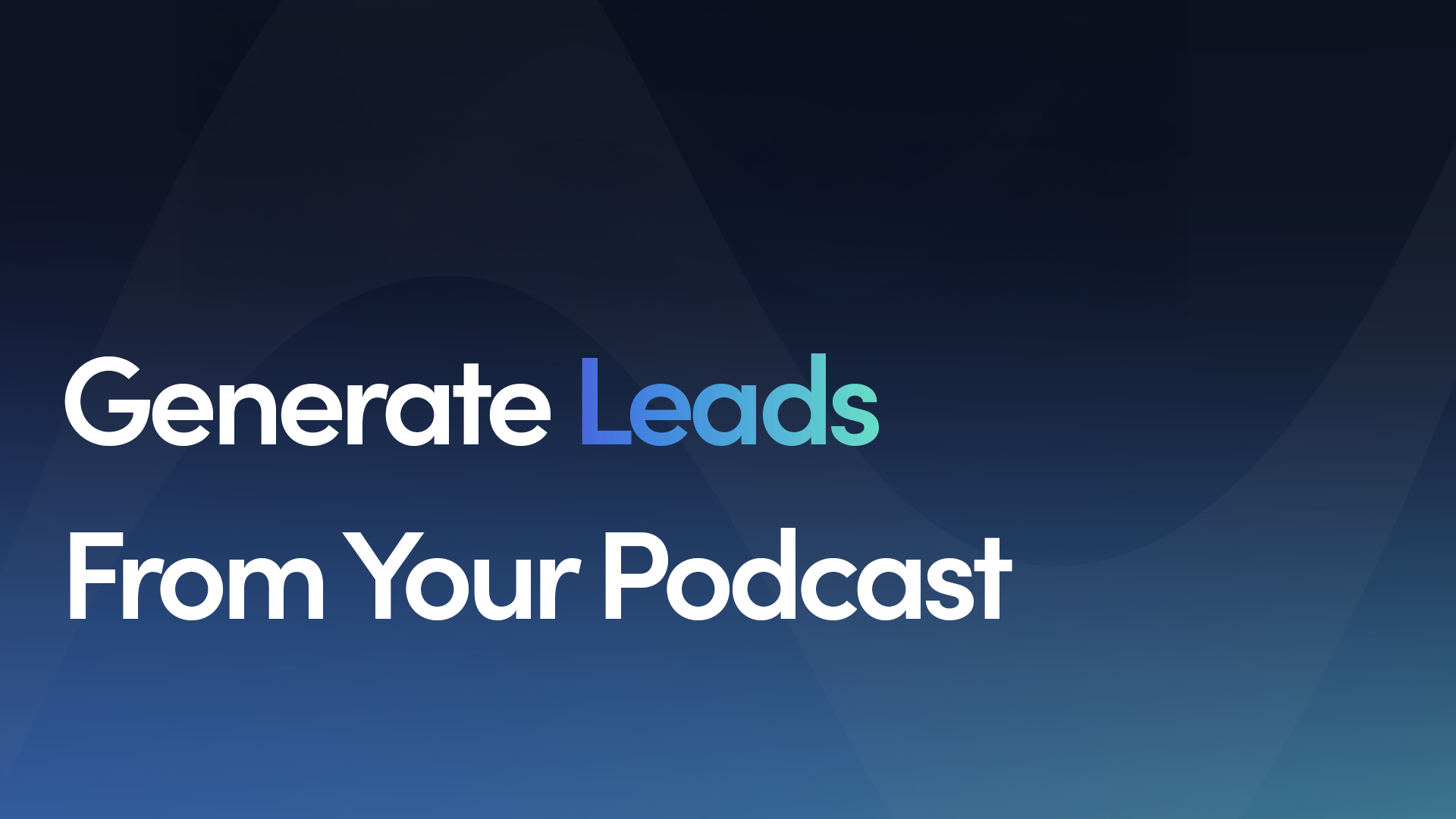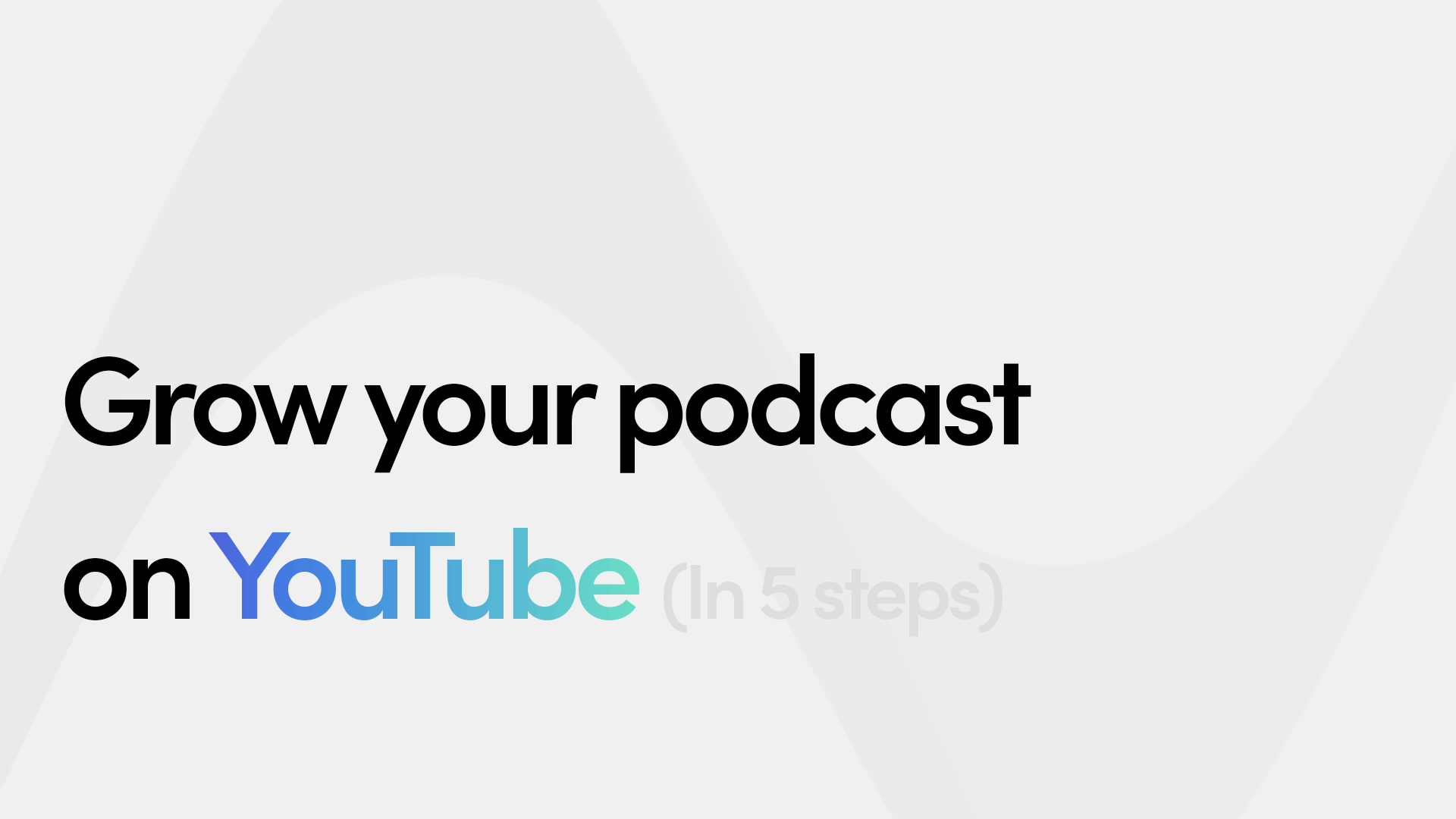Podcasts are one of the most effective tools for B2B lead generation. They build trust, demonstrate expertise, and attract a highly qualified audience. Unlike blog posts or social media content, podcasts capture sustained attention, making them ideal for sharing detailed insights and converting listeners into leads.
- Trust and Authority: Frequent episodes and guest appearances from industry experts establish credibility.
- Targeted Audience: Podcasts attract listeners who align with your niche, often decision-makers like executives.
- Storytelling Power: Sharing real client success stories and case studies resonates deeply with listeners.
- Actionable Content: Provide useful tips and clear next steps to convert listeners into leads.
- Promotion: Repurpose episodes into blog posts, social media snippets, and email newsletters to maximize reach.
To succeed, define clear goals, know your audience, and track results using tools like UTM parameters and analytics. Podcasts are a long-term strategy, but with the right approach, they can become an integrated piece in your top of sales efforts.
Turn Listeners Into Opportunities (5 Simple Strategies)
Why Podcasts Work for Getting Leads
Podcasts are one of the last media formats where people go to learn at depth. Unlike quick social scrolls or skimmed blogs, podcast listeners actively choose to spend 20, 30, or 60 minutes learning from you. This matters because they're pre-qualifying themselves.
When someone searches for a podcast episode on your topic and commits to listening, they're signalling high purchase intent. They want to learn what you know.
500 views on a podcast on email marketing could mean 500 highly interested, pre-qualified prospects…
Get Your Concept Right
Before you record anything, get clear on two things: what you want to achieve and who you're speaking to.
Your podcast goal should tie directly to a business outcome. Aim for 50 qualified leads per quarter, or 10 booked calls per month. This focus shapes everything: your topics, your guests, your calls-to-action.
Your ideal listener should match your ideal client. If you sell to marketing directors at SaaS companies, your content needs to address their specific problems. Don't try to serve everyone.
Ask yourself: What keeps my ideal client awake at 3am? What answers are they searching for? Build your podcast around those answers.
The Mindset Shift You Need
Getting leads doesn't mean virality or millions of views on TikTok.
Your prospect found you because they searched for exactly what you're talking about - meaning the interest is there.
The typical issue is that someone will spend 20+ minutes learning from you and have zero clear way to get more help… No obvious path forward.
Your goal is to make the next step clear and immediately valuable. You're bridging the gap for people with high purchase intent by giving them offers that feel like the logical next step, not a hard sell.
What You're Trying to Do
You're trying to get your audience off the platform and into your ecosystem.
This can mean:
- Booking a call with you
- Joining a private community
- Buying a low-ticket product
- Signing up for a free audit or consultation
Once they're in your ecosystem, you control the relationship. You can nurture them, make offers, and build trust over time.
Create Pathways for Different Listeners
Not everyone who discovers your podcast is at the same stage. Some are just learning about their problem. Others are actively looking for solutions. Design pathways that meet people where they are.
New Listeners (Just Discovered You)
Goal: Capture their email address
Path: Free guide → Email list → Regular value
Example: "Download my free 'Client Acquisition Checklist' to get the framework I use with my clients."
They download it and join your email list. Now you can continue the conversation via email, sharing insights, case studies, and valuable content that keeps you top of mind.
Regular Listeners (Engaged but Not Ready)
Goal: Deepen the relationship
Path: Premium content → Private community or event → Continued nurture
Example: "Join our private Slack community where I share exclusive case studies and answer questions every week."
They join the community. Now you have a direct channel to build deeper relationships and provide ongoing value.
Active Listeners (Showing High Intent)
Goal: Get them on a call or into a consultation
Path: Direct offer for discovery call or audit
Example: "If you want to see how this framework applies to your business specifically, book a 20-minute discovery call. I'll walk you through exactly what this would look like for you."
They book the call. Now you have a qualified lead who's already familiar with your expertise and approach.
The Key Principle is This:
Your podcast feeds people into your ecosystem at the top. Your email sequences, community engagement, and continued content move them deeper into the relationship until they're ready to work with you.
Use Lead Magnets to Capture Attention
Lead magnets are valuable resources you give away in exchange for an email address. They're the bridge between your podcast and your ecosystem.
A good lead magnet solves a specific problem for your ideal listener. It should be immediately useful and demonstrate your expertise.
Types of Lead Magnets
- Assessment tools
- Free guides or templates
- Checklists
- Mini-trainings or video walkthroughs
- Case study breakdowns
Promote Your Lead Magnet
Mention your lead magnet multiple times in each episode:
- At the start: "Before we dive in, if you want my complete framework for this, grab the free guide at [URL]"
- In the middle: "This is exactly what I cover in detail in the free guide, so make sure to download that"
- At the end: "If you found this valuable, the next step is to grab the free [resource] at [URL]"
Make the URL simple and easy to remember. Use something like "yourcompany.com/guide" or "yourcompany.com/checklist."
Create Content That Gets Results
Your podcast content should do two things: deliver genuine value and make the next step obvious.
Make It Useful and Practical
Start each episode by tackling a specific problem your ideal listener faces. Skip broad topics like "marketing strategies." Focus on something precise like "how to track which marketing channels bring you qualified leads."
Use the "teach and preview" method. Share enough to solve part of their problem, but make it clear there's a bigger framework or system available.
Case studies work well. Walk listeners through real situations where you've helped clients with similar problems.
End each episode with a clear next step: "If you want the complete framework, download the free guide at [URL]."
Structure Your Calls-to-Action
A good call-to-action feels natural. It should directly relate to the content you just shared.
If you discussed email marketing, offer an email template. If you talked about hiring, offer a candidate scorecard. If you explained a framework, offer the complete version as a downloadable guide.
Share Podcasts in Many Ways
When your podcast starts to work well, make it known more. Strong promotion makes your content go further and gives new ways for people to engage with what you know. Change each episode into other formats like blog posts, social media bits, and emails.
Turn your main points into posts on LinkedIn. Share big thoughts or quotes with more words during the week. This keeps your podcast seen and gets your crowd to check out the full episode.
Make short video clips from your podcast for social media. Take 60-90 second bits and add text or simple pictures. These clips do well on sites like LinkedIn, Twitter, and Instagram Stories, giving new people a quick look at your podcast.
Change your episodes into full blog posts. Add more ideas, more examples, and links to any stuff talked about in the episode. This not only helps with being found on search engines but also suits those who like to read more than hear.
Email your episodes to your list with extra info. Don't just say there's a new episode - tell them why it matters and give a big tip they can use right away, even if they don't hear the whole thing.
The key to getting leads from podcasts is giving real help and showing off what you know. Mix good tips with clear steps and smart sharing, and your podcast can be a strong tool for bringing in and turning leads.
sbb-itb-a205fab
Measuring Podcast ROI and Lead Attribution
To understand your podcast's impact on lead generation, you need to track more than downloads.
Tracking Listener Engagement and Conversions
Focus on metrics that show how well your podcast converts listeners into leads:
- Completion rates: Are people listening to the full episode?
- Click-through rates: How many people click your call-to-action links?
- Lead magnet downloads: How many people download your resources?
- Email sign-ups: How many new subscribers come from your podcast?
- Call bookings: How many discovery calls are booked from podcast listeners?
Monitor website traffic spikes after releasing episodes. Include "podcast" as an option in your lead capture forms so you can track where leads come from.
Using UTM Parameters and Analytics Tools
For precise tracking, create unique UTM parameters for each episode and promotion channel. Pair these with tools like Google Analytics to trace podcast interactions back to your revenue pipeline.
Set up specific goals in your analytics platform to track actions like resource downloads, email sign-ups, and consultation bookings directly tied to your podcast. Sync these insights with your CRM to capture the full scope of podcast-driven leads. This integrated approach ensures you’re not missing any connections between your content and your business results.
Building a Podcast That Generates Leads Consistently
Start With Clear Objectives
Define what success looks like. Are you aiming for 100 new email subscribers per month? 15 booked calls per quarter? Set specific targets and track progress.
Your content and calls-to-action should align with these objectives. Every episode should have a clear purpose in your lead generation strategy.
Consistency Matters
A weekly 20-minute podcast that sticks to a schedule will outperform sporadic hour-long episodes. Your audience needs to know when to expect new content.
Consistency also means maintaining the same quality and value in every episode. This reliability builds trust and makes your calls-to-action more effective.
Deliver Genuine Value
Each episode should solve a real problem your audience faces. When listeners implement your advice and see results, they'll trust you with bigger challenges.
Don't hold back valuable insights to "save them" for paid offers. Your free content should be genuinely useful. This demonstrates your expertise and makes people want to work with you.
Choose Guests Strategically
Guest selection can significantly expand your reach. Each guest brings their own audience, introducing your podcast to potential leads.
Invite guests whose audience aligns with your ideal client profile. A guest with 5,000 highly relevant followers is more valuable than one with 50,000 random followers.
Make Lead Capture Frictionless
The easier you make it to take the next step, the more leads you'll generate.
Use simple, memorable URLs. Create dedicated landing pages for each resource. Keep forms short (name and email is usually enough).
Make sure your lead magnets are immediately accessible. Send the download link instantly via email.
nalu Partners: Your Partner for Podcast Lead Generation

If you're looking to turn your podcast into a lead-generating powerhouse, teaming up with the right experts can make all the difference. That’s where nalu Partners steps in, offering tailored solutions to transform your podcast into a revenue-driving platform.
Our Done-For-You Full Partnership is perfect for businesses aiming to establish authority and book meetings through a fully managed podcast system. This service takes care of everything - planning, production, promotion, and lead conversion - while focusing on reaching your ideal audience and delivering measurable results.








